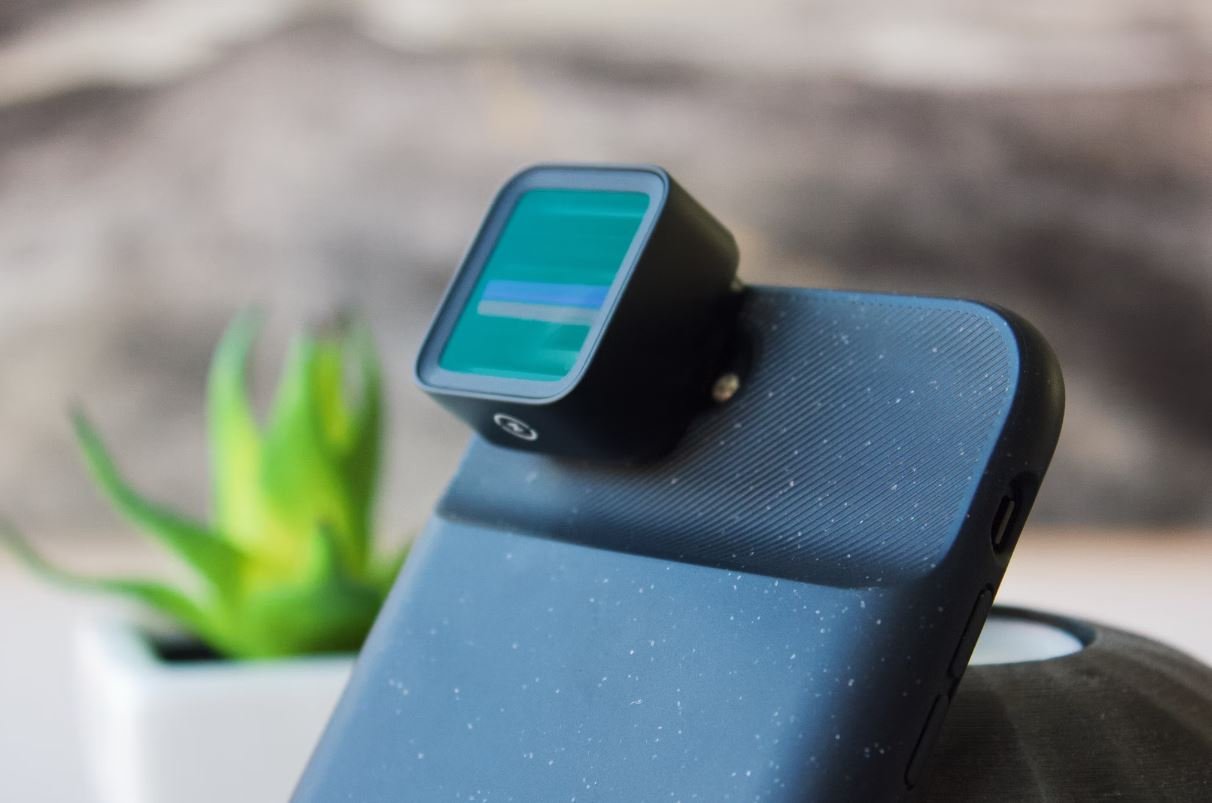Footage Stabilizer
Have you ever captured a great moment on camera, only for the video to turn out shaky and unstable? It can be frustrating to watch your footage and see it ruined by a shaky hand or unstable environment. However, with the help of a footage stabilizer, you can now transform your shaky videos into smooth and professional-looking clips.
Key Takeaways
- A footage stabilizer is a device or software that helps eliminate shakiness and instability in videos.
- Using a footage stabilizer can greatly improve the overall quality and professionalism of your videos.
- There are both hardware and software options available for stabilizing video footage.
A footage stabilizer is designed to reduce unwanted movement and shaking in videos, resulting in smoother and more visually pleasing footage. Whether you are shooting with a professional camera or a smartphone, a footage stabilizer can make a significant difference in the quality of your videos.
There are two main types of footage stabilizers: hardware stabilizers and software stabilizers. Hardware stabilizers, also known as gimbals, are physical devices that you attach your camera to. They use various technologies to keep the camera steady, such as gyroscopes and accelerometers. On the other hand, software stabilizers are programs or plugins that you can use to stabilize shaky videos during the editing process. They analyze the footage and apply algorithms to reduce the movement and provide a smoother result.
Using a footage stabilizer can enhance the viewing experience by eliminating distracting shakes and jitters. Whether you are shooting action-packed scenes, vlogs, or even professional videos, having stable footage is essential for capturing the attention of your audience.
Hardware Stabilizers vs. Software Stabilizers
Let’s take a closer look at the differences between hardware stabilizers and software stabilizers:
| Hardware Stabilizers | Software Stabilizers |
|---|---|
| Physical devices | Software programs or plugins |
| Attach camera to the stabilizer | Edit footage using software |
| Uses gyroscopes and accelerometers | Applies algorithms to reduce shaking |
| Offers real-time stabilization | Requires editing and processing time |
One of the advantages of hardware stabilizers is their ability to provide real-time stabilization. As you shoot, the stabilizer compensates for any movement, providing instant stability to your footage. This feature is particularly useful for videographers who require smooth and steady shots on the go.
On the other hand, software stabilizers offer the flexibility of stabilizing footage during the editing process. This allows for fine-tuning and adjustments to be made based on the specific needs of each shot.
Choosing the Right Footage Stabilizer
When selecting a footage stabilizer, it is important to consider your specific needs and preferences. Here are a few factors to keep in mind:
- Budget: Determine your budget, as hardware stabilizers tend to be more expensive than software stabilizers.
- Compatibility: Ensure that the stabilizer is compatible with the camera or software you use.
- Ease of Use: Look for stabilizers that are user-friendly and offer intuitive controls.
- Stabilization Quality: Read reviews and compare the stabilization capabilities of different stabilizers.
By carefully considering these factors, you can find the right footage stabilizer that suits your needs and helps you achieve stable and smooth videos.
Conclusion
In conclusion, a footage stabilizer is a valuable tool for anyone interested in improving the quality of their videos. Whether you choose a hardware stabilizer or a software stabilizer, you can enhance your footage by reducing and eliminating unwanted shakes and jitters. With the right stabilizer, you can transform your shaky videos into professional-looking clips that captivate your audience. So don’t let shaky footage hold you back – invest in a footage stabilizer and take your videos to the next level!

Common Misconceptions
1. Footage Stabilizers are Only for Professional Filmmakers
One common misconception about footage stabilizers is that they are only useful for professional filmmakers. However, this is far from the truth. Footage stabilizers can be beneficial for anyone who wants to capture steady videos, whether it’s for personal use or professional purposes. Whether you’re filming a vacation, a family gathering, or a school event, a footage stabilizer can improve the quality of your videos by reducing camera shake and producing smoother footage.
- Footage stabilizers are user-friendly and can be easily operated by anyone.
- Using a footage stabilizer doesn’t require any special filmmaking skills or expertise.
- Amateurs and hobbyists can greatly benefit from using a footage stabilizer to enhance their video productions.
2. Footage Stabilizers are Expensive and Unaffordable
Another misconception surrounding footage stabilizers is that they are expensive and only accessible to those with a large budget. While there are high-end professional-grade stabilizers that come with a hefty price tag, there are also more affordable options available for consumers with different budgets. Many entry-level stabilizers offer excellent stabilization performance at a fraction of the cost of professional models.
- There is a wide range of footage stabilizers available at different price points to suit various budgets.
- Many affordable stabilizers offer features and stabilization performance comparable to higher-priced models.
- Checking for discounts or purchasing during sales events can help get a footage stabilizer at an even more affordable price.
3. Footage Stabilizers Always Provide Perfectly Stable Shots
While footage stabilizers are designed to minimize camera shake and make videos smoother, it’s important to note that they do not guarantee perfectly stable shots in all situations. Certain factors such as extreme motions, sudden impacts, or very strong winds can still create some degree of instability. Footage stabilizers can greatly improve stability, but they cannot completely eliminate all motion. It’s important to manage expectations and understand the limitations of footage stabilizers.
- Footage stabilizers reduce camera shake and make videos significantly smoother, but they can’t eliminate all motion.
- In extreme conditions, some degree of instability may still be present, albeit reduced compared to handheld footage.
- Understanding the limitations of footage stabilizers can help users adapt their shooting techniques accordingly.
4. Any footage stabilizer can be used for all camera types
Some people believe that any footage stabilizer can be used with any type of camera. However, different cameras have varying weights, sizes, and lens setups, which can affect the stability and effectiveness of a footage stabilizer. It’s important to choose a stabilizer that is specifically designed for the weight and dimensions of your camera. This ensures optimal performance and prevents potential damage to the equipment.
- Footage stabilizers have weight and size limits, so it’s essential to select a stabilizer compatible with your camera’s specifications.
- Using an improper stabilizer for your camera may lead to instability, reduced stabilization performance, or potential damage to the stabilizer or camera.
- Researching and consulting the manufacturer’s guidelines can help in identifying the right stabilizer for your specific camera model.
5. Footage stabilizers are only useful for video recording
Many people mistakenly assume that footage stabilizers are solely intended for shooting videos. However, these stabilizers can also be utilized for capturing stable photos. By attaching a camera to a footage stabilizer and adjusting its settings, photographers can benefit from reduced shake and improved image quality. Whether shooting a video or taking static photographs, a footage stabilizer can enhance the stability and professionalism of your visual content.
- Footage stabilizers are versatile tools that can be used for both video recording and still photography.
- Using a footage stabilizer for photography helps minimize camera shake and results in sharper images.
- Some footage stabilizers offer additional features, such as time-lapse and panoramic modes, which can enhance photographic creativity.

Footage Stabilizer: Reducing Camera Shake and Enhancing Visual Quality
Camera shake is a common challenge for photographers and videographers alike. Whether caused by natural hand movements, external factors such as wind, or the limitations of certain devices, shaky footage can significantly diminish the quality and impact of visual content. In response to this issue, the development of footage stabilizers has revolutionized the field, allowing for smoother and more professional-looking results. This article explores ten noteworthy aspects of footage stabilizers, providing factual data and information to demonstrate their effectiveness.
Stabilizer Types and Their Functions
Each stabilizer type has its own advantages and purposes. Understanding the differences between them is crucial to selecting the most appropriate tool for specific shooting scenarios.
| Type | Function |
|---|---|
| Gimbal Stabilizer | Maintains camera steadiness using motorized 3-axis movement. |
| Shoulder Rig | Distributes weight over the shoulder, minimizing hand vibrations. |
| Vest Stabilizer | Mounts camera on a vest worn by the operator for increased stability. |
| Handheld Stabilizer | Employs counterweights and handles to reduce camera shake. |
| Drone Stabilizer | Mitigates drone movements and vibrations for smoother aerial footage. |
Continuous Improvement: Footage Stabilizer Technological Evolution
Footage stabilizers have undergone remarkable advancements in recent years, adapting to changing industry needs and incorporating cutting-edge technologies.
| Technology | Benefits |
|---|---|
| Inertial Measurement Unit (IMU) | Measures motion, orientation, and velocity, contributing to real-time adjustments. |
| Brushless Motors | Provide smoother and more precise stabilization through motorized systems. |
| Wireless Connectivity | Enables remote control and adjustment of the stabilizer settings. |
| Auto Calibration | Streamlines setup and ensures optimal performance without manual configuration. |
| Intelligent Tracking | Automatically follows subjects, enhancing the filmmaking process. |
Impact of Stabilization on Visual Output
The utilization of a footage stabilizer can significantly impact the quality and appeal of visual content, transforming shaky footage into smooth and professional shots.
| Aspect | Improvement |
|---|---|
| Image Stabilization | Reduces blurriness and improves overall image clarity. |
| Cinematic Feels | Imitates the smooth and fluid movements seen in professional films. |
| Professional Look | Elevates the visual quality, making footage appear more polished and captivating. |
| Artistic Possibilities | Enables creative techniques and innovative shots. |
Stabilizer Effectiveness Based on Shooting Environments
Different shooting environments have unique challenges and requirements. The effectiveness of a stabilizer might vary depending on these factors.
| Environment | Stabilizer Effectiveness |
|---|---|
| Indoor | Well-suited for capturing smooth shots with limited space for movement. |
| Outdoor | Reduces the impact of external factors like wind and uneven surfaces. |
| Low Light | Helps stabilize footage in challenging lighting conditions, improving visibility. |
| Action Shots | Allows for smooth capture of fast-paced movements during dynamic scenes. |
Price Range and Features of Popular Stabilizer Brands
Several well-established brands offer a range of stabilizers with varying features and price points. Understanding these options aids in making informed purchasing decisions.
| Brand | Price Range (USD) | Key Features |
|---|---|---|
| DJI | $150-$1,000+ | Advanced stabilization technology; intelligent subject tracking; wireless control. |
| Zhiyun | $100-$500 | Motorized 3-axis stabilization; compact and lightweight design. |
| FeiyuTech | $100-$700 | Enhanced stabilization control; compatibility with various camera models. |
Factors to Consider When Choosing a Stabilizer
Selecting the most suitable stabilizer requires careful evaluation of various factors to ensure optimal results.
| Factor | Considerations |
|---|---|
| Camera Compatibility | Ensure the stabilizer supports your camera model and weight. |
| Mobility | Consider whether a lightweight or more robust stabilizer is required for your projects. |
| Battery Life | Evaluate the stabilizer’s battery capacity and duration to match your shooting needs. |
| Budget | Balance the desired features with the available budget. |
Stabilizer Maintenance and Care Tips
Proper maintenance and care ensure long-lasting performance and durability of your footage stabilizer.
| Tips |
|---|
| Regularly clean the stabilizer and remove any dirt or debris. |
| Inspect and tighten screws or components as needed. |
| Store the stabilizer in a dry and protective case when not in use. |
| Follow the manufacturer’s guidelines for maintenance and servicing. |
Future Stabilization Technologies: Innovations on the Horizon
The field of footage stabilization is progressing rapidly, and exciting developments are expected in the near future.
| Innovation | Potential Benefits |
|---|---|
| AI-Powered Stabilizers | Enhanced stabilization capabilities using artificial intelligence algorithms. |
| Virtual Reality (VR) Stabilization | Immersive VR experiences with reduced motion sickness and improved stability. |
| Hybrid Stabilization | Combining multiple stabilizing techniques for even more precise results. |
In conclusion, footage stabilizers have become indispensable tools for filmmakers and photographers aiming to achieve professional-looking and visually captivating results. With various stabilizer types, advanced technologies, and a significant impact on the output quality, these devices offer exciting possibilities. Understanding the different stabilizer options, their effectiveness in various shooting environments, and key factors to consider enables users to select the most suitable stabilizer for their needs, ensuring optimal stability and visual excellence. As the field continues to evolve, upcoming innovations will surely push the boundaries of footage stabilization even further, providing filmmakers with new creative opportunities and enhancing viewers’ overall viewing experience.
Footage Stabilizer – Frequently Asked Questions
What is a footage stabilizer?
A footage stabilizer is a device or software used to reduce or eliminate shaky or unstable camera movements in videos. It helps in producing smoother and more professional-looking footage.
How does a footage stabilizer work?
A footage stabilizer works by analyzing the motion in a video and applying corrective adjustments to reduce the visible shake or movement. It uses various techniques like optical image stabilization, electronic stabilization, or software algorithms to achieve stability.
What are the benefits of using a footage stabilizer?
Using a footage stabilizer offers several benefits, including:
- Improved video quality with reduced camera shake.
- Enhanced professionalism in your video productions.
- Ability to capture smooth shots even in fast-paced or dynamic situations.
- Reduced post-production effort by minimizing the need for manual stabilization.
Can I stabilize a shaky video without a footage stabilizer?
While it is possible to manually stabilize a shaky video using video editing software, it can be a time-consuming and challenging process. Footage stabilizers are designed to automate and simplify this task, providing more effective results in a fraction of the time.
Are footage stabilizers only for professional filmmakers?
No, footage stabilizers are used by both professionals and hobbyists alike. They are available in various forms and for different budgets, allowing anyone to stabilize their videos and achieve better results.
Can I use a footage stabilizer with any camera?
Footage stabilizers are compatible with a wide range of cameras, including DSLRs, mirrorless cameras, smartphones, and action cameras. However, it’s important to check the compatibility requirements of the specific stabilizer you intend to use.
What types of footage stabilizers are available?
There are several types of footage stabilizers available, including:
- Gimbal stabilizers: These use motorized three-axis systems to stabilize the camera while allowing smooth camera movements.
- Optical image stabilizers: Some cameras and lenses have built-in stabilization mechanisms to reduce camera shake.
- Electronic stabilizers: These rely on sensor-based technology to detect and compensate for camera movements.
- Software stabilizers: Video editing software often includes stabilization features to digitally stabilize shaky footage.
What factors should I consider when choosing a footage stabilizer?
When choosing a footage stabilizer, consider the following factors:
- Compatibility with your camera or smartphone.
- The type of stabilization mechanism (gimbal, optical, electronic, software).
- Weight and size of the stabilizer for portability.
- Battery life and power source.
- User-friendly controls and ease of use.
- Budget and cost versus performance.
Can I use a footage stabilizer for live streaming?
Yes, some footage stabilizers are designed for live streaming applications. These stabilizers often have additional features such as smartphone integration, multi-camera support, and real-time adjustments to enhance the stability of your live stream videos.
Are there any post-processing steps required after using a footage stabilizer?
In most cases, the footage stabilized by a stabilizer is ready to use without any additional post-processing steps. However, depending on your specific requirements and the quality of stabilization achieved, you may still need to apply color correction, cropping, or other adjustments during post-production.




